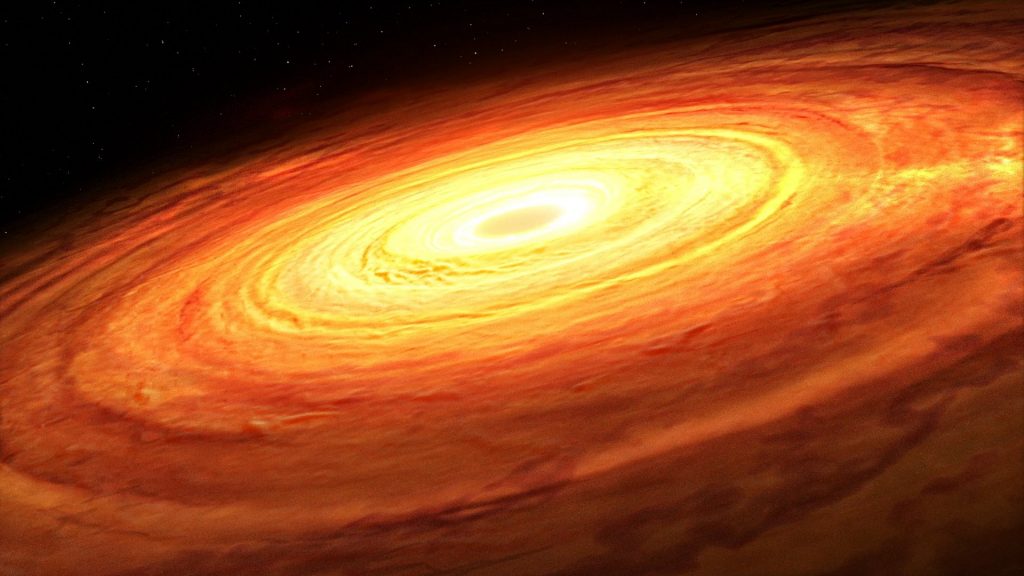Finding the mass of a black hole isn’t always easy—especially when it’s at the center of a galaxy so far away. A team of researchers has now discovered a surprising correlation that could make it easier to “weight” black holes: mass can apparently be derived from fluctuations in the brightness of the disk of matter that surrounds many black holes. The researchers write in Science that this method works for supermassive objects at the centers of galaxies and for stellar black holes that have previously emerged from stars.
Due to the conservation of angular momentum, matter does not fall directly into the black hole, but approaches it in a spiral path. As a result, a dense disk of gas and dust can form around the central body, which heats up and glows intensely: in the case of supermassive black holes, these accretion disks sometimes shine brighter than the entire surrounding galaxy, although they are only about the size of our solar system. Colin Burke of the University of Illinois, USA, and colleagues reported in the current study that physical processes in the accretion disk lead to erratic fluctuations in brightness. However, it is still not clear what processes are responsible for this.
In search of an explanation, Burke and his team evaluated archive data from supermassive black holes. Astrophysicists have focused on objects whose masses can be well estimated using other methods. A total of 67 black holes in the mass range from ten thousand to ten billion solar masses eventually met the criteria for selecting scientists. To their surprise, Burke and colleagues found a clear relationship between the mass of a black hole and the characteristic properties of brightness fluctuations in the optical range. The relationship found with black holes cannot be observed only. It also appears to apply to celestial bodies of much lower mass that are also surrounded by a disk of matter, such as white dwarf stars.
The result of the analysis indicates that in all accretion discs – regardless of central body mass – the same physical mechanism is responsible for the flickering, according to the Burke researchers. Although this process is still unknown, the observed relationship is suitable for determining the mass of supermassive black holes of stellar black holes with the help of brightness fluctuations.




More Stories
Nvidia GeForce RTX 4090: AIDA64 gets Ada spearhead support
Rogue Trader – Details about the first cRPG in the series – CD-Action
t3n – Digital Pioneers | digital business magazine